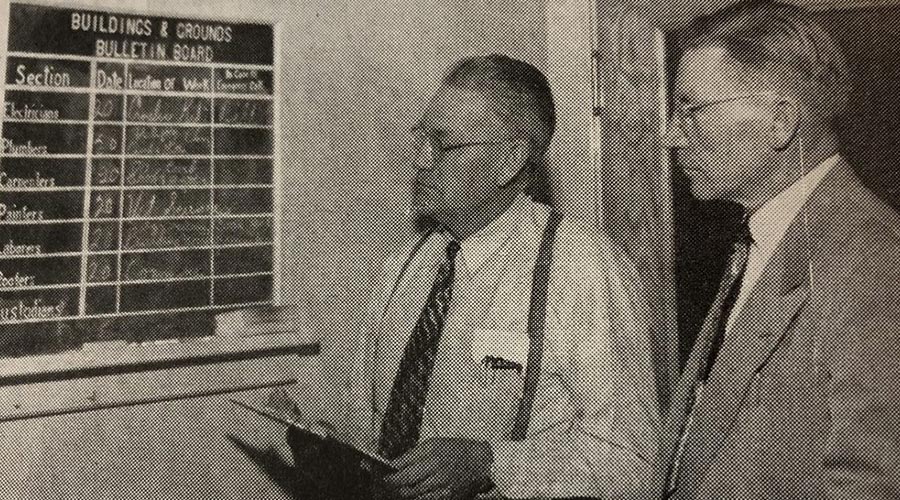Federal Regulations for T12 Fluorescent Lamps, Incandescents, and EPAct Tax Deductions
Are EPAct's days numbered? The law, which provides tax deductions for energy efficiency measures that meet certain requirements, is currently set to expire on Dec. 31, 2013. That means projects need to be completed by the end of to 2013 if they are to qualify for an EPAct tax deduction. While supporters of the measure will certainly push for an extension, the safest course for facility managers who want to take advantage of those deductions is to begin planning now.
The use of EPAct has been rising sharply, according to Charles R. Goulding, president of Energy Tax Savers. "It's gone up like a hockey stick," he says. "There's much more tribal knowledge about how to use the law." That knowledge is especially important when it comes to getting the full $1.80 tax deduction that is available for projects involving HVAC and the building envelope as well as lighting. "Now we can say almost prescriptively, do this and this and you'll get the $1.80," says Goulding.
Because the law as it stands now requires projects to be completed by Dec. 31, 2013, facility managers who want to be certain of qualifying should start planning projects soon. That's especially true of projects involving the building envelope and HVAC, which may have longer timeframes from initial planning and approval to completion.
Facility managers should also be aware of an important change in IRS rules about EPAct deductions. Originally, if an organization failed to claim a deduction it was entitled to, the only recourse was to file an amended tax return — a costly hassle — within three years. Now, organizations can claim any missed deductions — even if they go back farther than three years — without amending old tax returns.
— Edward Sullivan, editor
Regs for T12s, Other Lamps
This year brings another big step on the road away from less efficient lighting sources, as the U.S. manufacture and import of most T12 lamps is halted. The long-term effect will be to reduce facility energy costs. In the short term, facility managers whose buildings still have lamps affected would do well to take a close look at their lighting systems to identify the best way to move to newer, more efficient lighting technologies, says Craig DiLouie, principal of ZING Communications, a consulting firm specializing in the lighting industry.
In some cases, he says, utility incentives may still be available to help defray the cost of replacing older light sources.
The first step is to understand the new rules:
T12 lamps. As of July 14, 2012, the U.S. manufacture or import of most T12 lamps is barred. The rules cover most standard 4-ft T12 lamps, 8-ft T12 lamps, and 2-ft T12 U lamps. There are exemptions for some T12 lamps, such as cold temperature lamps. Manufacture and import of some T8 lamps will also be halted, including some 2-ft T8 U lamps and 4-ft T8 lamps with low CRIs.
Incandescent lamps. Standard A19 100-watt incandescent lamps can no longer be manufactured in or imported into the United States as of Jan. 1, 2012. On Jan. 1, 2013, the U.S. manufacture or import of 75-watt lamps comes to a halt.
PAR lamps. As of July 14, 2012, PAR 20, PAR 30 and PAR 38 lamps must meet new energy standards. That will mean many incandescent and halogen reflector lamps will no longer be produced in the United States or imported, but more energy-efficient PAR lamps, using infrared-reflecting or IR halogen technology, are not affected.
Old lamps will still be available until distributor stocks are sold out, and facility managers can stockpile lamps to extend the life of existing systems. But those approaches are stop-gaps.
"Building owners and managers can maximize the benefit of [the T12] regulation if they treat it as an opportunity to comprehensively address lighting energy efficiency to minimize operating costs, and lighting quality to maximize worker satisfaction, sales or whatever else they need good lighting to achieve," says DiLouie. He cites three options for moving to more energy efficient lighting: direct conversion to T8 lamps and ballasts; T8 or T5 optical conversion kits; or fixture replacement. An approach to avoid: replacing T12 lamps and ballasts as they fail. One problem with that tactic is the incompatibility between T12 ballasts and T8 lamps. Whatever strategy facility managers choose, it's worth considering lighting controls as part of the upgrade.
For more details on the lamp rules, see "U.S. Department of Energy Issues New Lamp Efficiency Rules" by Craig DiLouie at bit.ly/LCADOE.
— Edward Sullivan, editor
Related Topics:


















